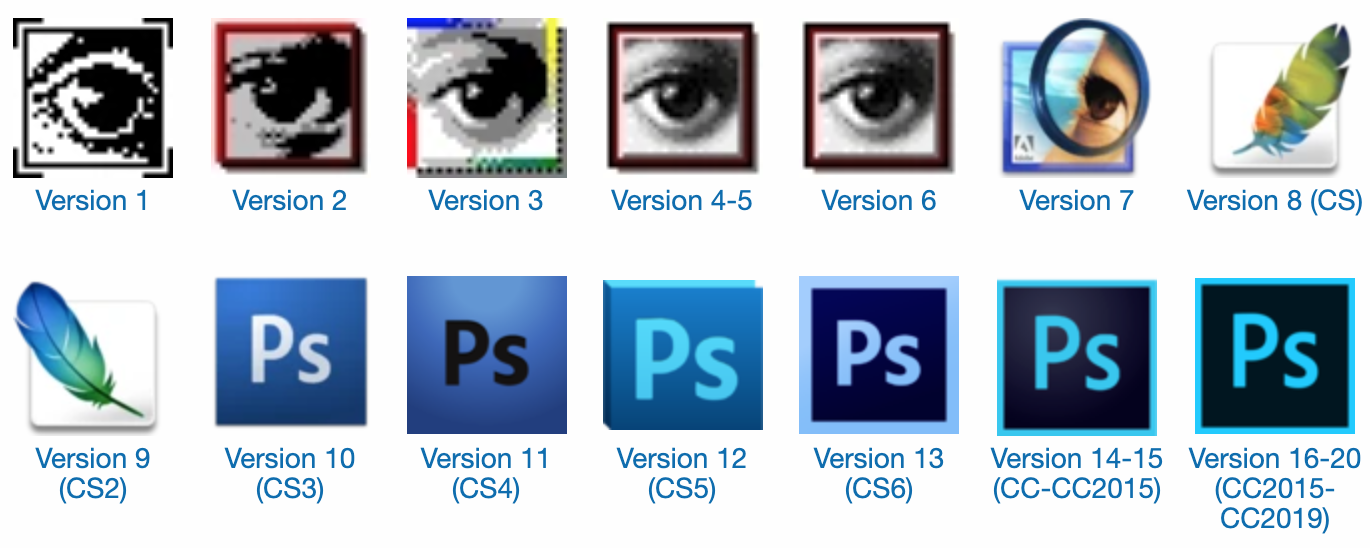Introduction
The History of Photoshop is a fascinating journey that showcases its transformation from a simple image display tool into the most powerful digital editing software in the world. Photoshop revolutionized digital image manipulation and became an essential tool for photographers, designers, and artists. But how did Photoshop start? Let’s explore its history from its origins to its evolution into the industry leader it is today.
The Beginning: 1987 – Birth of Photoshop
The journey of Photoshop began in 1987 when Thomas Knoll, a Ph.D. student at the University of Michigan, created a program called “Display.” It was designed to display grayscale images on a monochrome screen. His brother, John Knoll, who worked at Industrial Light & Magic, saw the potential of the program and suggested developing it into a full-fledged image editing software.
1988 – Adobe Acquires Photoshop
Thomas and John Knoll continued to improve the software, adding features like image adjustments and basic tools. They renamed it “ImagePro,” but due to trademark issues, it was later renamed Photoshop. In 1988, Adobe Systems recognized the software’s potential and purchased the distribution rights from the Knoll brothers.
1990 – Photoshop 1.0 is Released
On February 19, 1990, Adobe officially launched Photoshop 1.0 for Macintosh computers. It had limited tools compared to today’s versions but introduced fundamental features like color correction, retouching tools, and layer-based editing.
Evolution of Photoshop: Major Versions and Milestones
As technology advanced, Adobe continued to release improved versions of Photoshop with new features:
Key Milestones in the History of Photoshop
Photoshop 2.0 (1991)
- Introduced paths and CMYK color support.
Photoshop 3.0 (1994)
- The revolutionary “Layers” feature was added.
Photoshop 5.0 (1998)
- Brought editable type layers and color management.
Photoshop 7.0 (2002)
- Introduced the Healing Brush tool.
Photoshop CS (2003)
- Marked the start of the Creative Suite branding.
Photoshop CS3 (2007)
- Faster performance with a redesigned interface.
Photoshop CS6 (2012)
- Introduced the Content-Aware Move tool.
Photoshop CC (2013-Present)
- Shifted to a subscription-based Creative Cloud model with regular updates.
Photoshop CS Versions (2003 – 2012)
- Photoshop CS (8.0) (October 2003) – Introduced Camera Raw 2.x support.
- Photoshop CS2 (9.0) (April 2005) – Added Smart Objects and Vanishing Point.
- Photoshop CS3 (10.0) (April 2007) – Quick Selection tool and refined UI.
- Photoshop CS4 (11.0) (October 2008) – Content-Aware Scaling and Mask Panel.
- Photoshop CS5 (12.0) (April 2010) – Content-Aware Fill and Puppet Warp.
- Photoshop CS6 (13.0) (May 2012) – New Mercury Graphics Engine and Content-Aware Move.
Creative Cloud (CC) Era (2013-Present)
- Photoshop CC (14.0) (June 2013) – Camera Shake Reduction and editable rounded rectangles.
- Photoshop CC 2014 (15.0) (June 2014) – Creative Cloud Libraries introduced.
- Photoshop CC 2015 (16.0) (June 2015) – Artboards and Device Preview features.
- Photoshop CC 2017 (18.0) (November 2016) – New Template Selector and Touch Bar support.
- Photoshop CC 2018 (19.0) (October 2017) – Brush organization improvements and Curvature Pen Tool.
- Photoshop CC 2019 (20.0) (October 2018) – Frame Tool and Live Blend Mode preview.
- Photoshop 2020 (21.0) (November 2019) – Object Selection tool and enhanced Properties Panel.
- Photoshop 2021 (22.0) (October 2020) – Neural Filters and Sky Replacement.
- Photoshop 2022 (23.0) (October 2021) – Content Credentials (Beta) and other enhancements.
- Photoshop 2023 (24.0) (October 2022) – Generative AI features and Pantone color support changes.
- Photoshop 2024 (25.0) (September 2023) – Introduced Generative Fill and Generative Expand tools.
Impact and Future of Photoshop
Today, Photoshop is an essential tool for photographers, graphic designers, web developers, and digital artists. It has expanded to include AI-powered tools, 3D editing, and seamless integration with other Adobe software. The History of Photoshop shows how it has set the standard for digital creativity.
Conclusion
From a simple grayscale display tool to the most powerful image editing software in the world, the History of Photoshop is remarkable. Its continuous innovation keeps it at the forefront of digital art, making it a must-have tool for creative professionals worldwide. At MaxWeddingStudio.in, we understand the importance of using the best editing tools like Photoshop to deliver high-quality, stunning visuals that capture life’s most precious moments.


